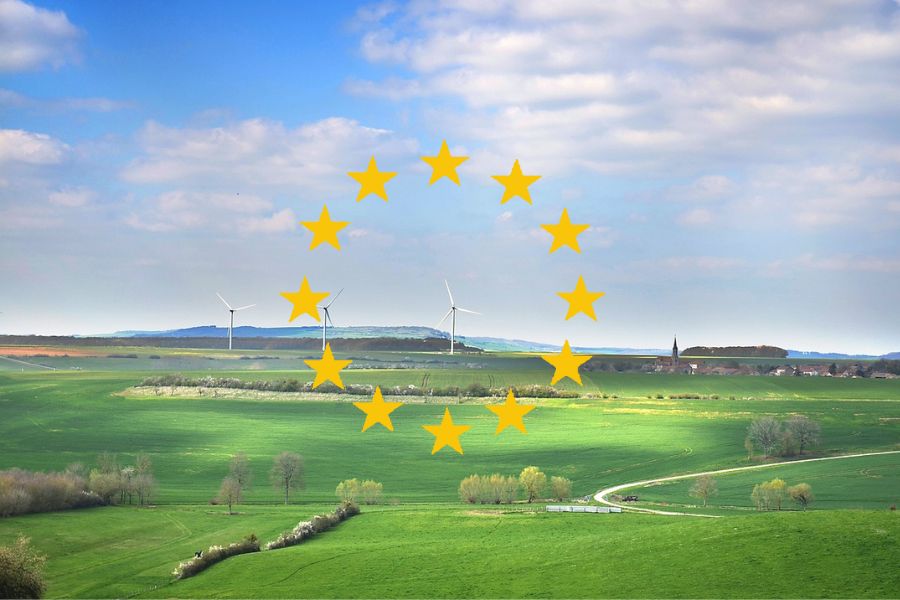
Job Opportunities in Environmental Research at Sciences Po
18 July 2024
REPowerEU from the bottom-up: An analysis of EU-funded projects in presenting concrete solutions with a bottom up approach
24 July 2024By Marc Ringel, Chairholder, and Sarah Thompson, Senior Research Programme Manager, European Chair for Sustainable Development and Climate Transition
Following the Strategic Agenda 2024-2029[1] endorsed by the European Council on 10 July 2024, European Commission President Ursula von der Leyen—having just been re-elected for a second five-year term—unveiled her political guidelines[2] for the next European Commission on 18 July 2024. This document—titled “Europe’s Choice”— lays out the key objectives and initiatives for the EU proposed over the period 2024-2029.
This new agenda builds on the previous Commission’s “European Green Deal”, emphasising that Europe must take charge of its transformation in an increasingly unstable global environment. The strategic framework asserts that “our era’s greatest challenges – from security to climate change to competitiveness – can only be solved through joint action”. According to von der Leyen, Europe’s choice is to pursue these transformations as a unified body, underscoring the Commission’s commitment to meet “generational challenges in this unstable world”.
Continuation of the European Green Deal
In the lead-up to the recent elections for the European Parliament, calls emerged from various policymakers and Member State governments advocating for a suspension of the Green Deal’s implementation.[3] Contrary to these fears, the guidelines confirm that the European Commission will maintain its goals, including those set out in the European Green Deal. The European Union thus continues its ambitious targets: achieving carbon neutrality by 2050, reducing greenhouse gas emissions by 55% by 2030 (from 1990 levels), and proposing an additional interim target of a 90% reduction by 2040 through revisions to the European Climate Law.
The “Europe’s Choice” strategy can therefore be interpreted as a progression to the next phase of the Green Deal, incorporating recent lessons and a reinforced focus on resilience and strategic autonomy. A central message of this new phase is a pivot from solely climate-centric policies toward an integrated “climate and growth” agenda, highlighting economic and technological opportunities that arise from the global transition.
A new focus on industrialisation
Competitiveness and industrial development within Europe are the new focus of this strategy. Under the heading “Europe’s sustainable prosperity and competitiveness”, the guidelines articulate a recalibrated focus on the economic dimensions of green growth. Four main policy streams frame this reorientation:
- Implementation of Existing Legislation: Building on the regulatory groundwork established by the Green Deal and the Fit for 55 package, which will guide EU policies until 2030.
- Resilience in Core Climate Areas: Strengthening economic, social, and environmental resilience as part of broader climate mitigation and adaptation efforts.
- Energy Sector Modernisation: Prioritising energy sector transformation as essential to Europe’s competitive edge and reducing emissions, given that this sector accounts for around 75% of Europe’s greenhouse gas emissions.
- Industrial and Technological Leadership: Enhancing the competitiveness of EU industries through clean technology and reducing dependency on critical raw materials sourced from non-EU countries.
From the “Green Deal Industrial Plan” to the “Clean Industrial Deal”
At the centre of this approach is the “Clean Industrial Deal”, a cornerstone of the next phase of the “European Green Deal” and which should be introduced within the first 100 days of the new Commission’s mandate. Seeking to decarbonise Europe’s industries while advancing economic and technological goals, this deal draws on many aspects of the “Green Deal Industrial Plan”, which aims to enhance the competitiveness of Europe’s net-zero industry and accelerate the transition to climate neutrality. [4] Through the fostering a supportive environment, the “Green Deal Industrial Plan” encourages scaling up the EU’s manufacturing capacity for the technologies and products needed to achieve Europe’s ambitious climate targets, and is centred on the following four pillars:
- Simplified Regulatory Environment: Includes reforms for predictable regulations and quick deployment of manufacturing.
- Access to Funding: Faster access through national and EU funding sources.
- Enhanced Skills: Emphasis on green and digital skills through initiatives like the European Skills Agenda.
- Open Trade and Resilient Supply Chains: Aims for diversified access to critical inputs and strategic partnerships to strengthen trade and supply security.
To complement the four pillars of the “Green Deal Industrial Plan”, the EU has set ambitious targets to accelerate its green transition. This includes leveraging significant funding sources, such as €250 billion from the Recovery and Resilience Facility, €372 billion through InvestEU, and €40 billion from the Innovation Fund over the next decade.[5] The plan aims to expand green job growth and boost productivity in the clean energy sector, which is already 20% above the economy-wide average. [6] By 2030, the global clean energy market could reach US$650 billion annually, positioning the EU as a leader in climate-friendly innovation and strengthening its net-zero startup ecosystem, valued at over €100 billion in 2021. [7]
Conclusions
In summary, “Europe’s Choice” highlights that the European Commission remains firmly committed to the “European Green Deal”. In her European Parliament Plenary speech, President von der Leyen outlined a vision for a resilient, prosperous, and democratic Europe—one that supports social fairness, upholds its commitments, and maintains the Green Deal targets with a pragmatic, technology-neutral, and innovative approach. [8]
The “Europe’s Choice” guidelines mark a new phase in Europe’s climate and growth strategy, reinforcing key Green Deal pillars such as climate, energy, and resource policies, while underscoring the importance of resilience. The guidelines advocate for a clear industrial strategy that fosters innovation, enhances competitiveness, and reduces dependencies, enabling Europe to advance both industrialisation and decarbonisation.
[1] https://www.consilium.europa.eu/media/4aldqfl2/2024_557_new-strategic-agenda.pdf
[2] https://commission.europa.eu/document/download/e6cd4328-673c-4e7a-8683-f63ffb2cf648_en?filename=Political%20Guidelines%202024-2029_EN.pdf
[3] https://www.euronews.com/2024/06/13/does-rightward-swing-and-greens-downturn-spell-end-of-the-green-deal
[4] https://commission.europa.eu/strategy-and-policy/priorities-2019-2024/european-green-deal/green-deal-industrial-plan_en
[5] Factsheet: The Green Deal Industrial Plan
[6] Idem
[7] Idem
[8] https://ec.europa.eu/commission/presscorner/detail/ov/STATEMENT_24_3871


